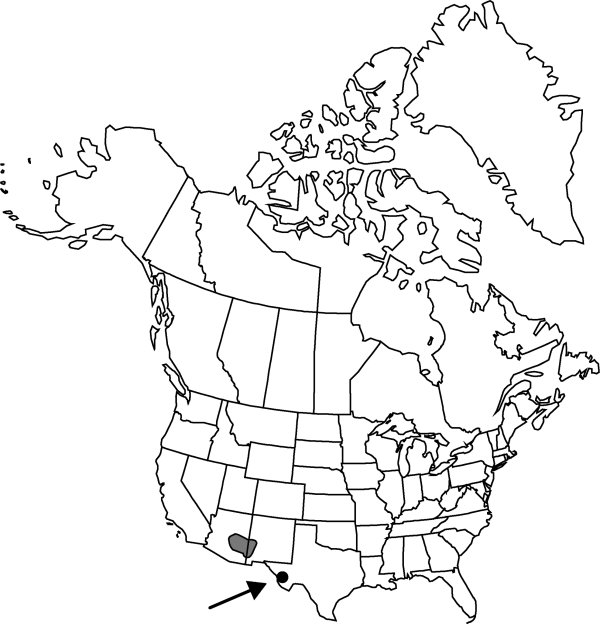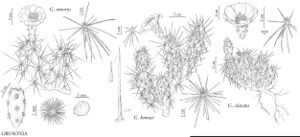Grusonia emoryi
J. Arizona-Nevada Acad. Sci. 32: 50. 1999.
Shrubs, forming mats, 15–30 cm. Roots diffuse. Stem segments curved-clavate, gradually to abruptly narrowed at base, 7–19 × 2.5–5 cm; tubercles very prominent, 20–50 mm, 1–3.5 times longer than wide, not or little obscured by spines; areoles 4–6 mm in diam.; wool white to gray. Spines 12–30 per areole, mostly in apical areoles to ± uniformly distributed along stems (in northern populations), spreading, yellow, tan, or redbrown, tipped yellow, longest 3–7 cm; major 3–5 abaxial spines divergent, yellowish or redbrown, angular-flattened, sharp-edged; major (1–) 3–5 adaxial spines ascending-divergent, tan or redbrown, angular-flattened to subterete. Glochids adaxial in areole, yellow to brown, 5–7 mm. Flowers: inner tepals yellow, 20–30 mm; filaments yellow to reddish; style cream; stigma lobes cream or tinged pink. Fruits yellow, cylindric to ellipsoid, 40–90 × 14–40 mm, fleshy, spineless (rarely with few very short spines) but usually densely yellow glochidiate; areoles 30–45. Seeds yellowish white to yellow, 5–6 × 3.5–4 mm, smooth. 2n = 44.
Phenology: Flowering late spring (May–Jun).
Habitat: Chihuahuan and Sonoran deserts, sandy or gravelly desert flats, washes, hills
Elevation: 700-1200 m
Distribution

Ariz., N.Mex., Tex., Mexico (Chihuahua)
Discussion
Selected References
None.
